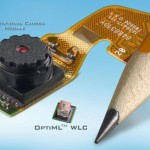 An interesting article in the New York Times today discusses a Silicon Valley company called Tessera Technologies that creates packaging technology that allows for the production of miniature electronics products. The intrigue of the article to most readers, and to the author, is two-fold: (1) the miniature technology products envisioned by the company’s leaders, and (2) the ability of the company to avoid the demise that many Silicon Valley companies have met over the last few years. A certain few last paragraphs of the article, however, provided a third intrigue that, to me, overshadows (1) and explains (2). These paragraphs read as follows:
An interesting article in the New York Times today discusses a Silicon Valley company called Tessera Technologies that creates packaging technology that allows for the production of miniature electronics products. The intrigue of the article to most readers, and to the author, is two-fold: (1) the miniature technology products envisioned by the company’s leaders, and (2) the ability of the company to avoid the demise that many Silicon Valley companies have met over the last few years. A certain few last paragraphs of the article, however, provided a third intrigue that, to me, overshadows (1) and explains (2). These paragraphs read as follows:
Many chip makers, including giants like Intel and Samsung, have licensed Tessera’s packaging technology.
Last year, Tessera recorded about $250 million in revenue, most of it from licensing the packaging technology, and it put 25 percent of that total toward research and development spending.
Tessera’s strategy has locked it into near-constant litigation, charging some of the world’s largest chip makers with stealing its packaging techniques.
Tessera has since settled most of the claims, and its share price has reflected the peace. In the last nine months, Tessera’s stock has climbed to $26 a share, from $9.
Now, the company wants to focus on growth and solidify a strategy that has been in the works for the last four years.
And there you have it. An article about a small company that can outlast the giants by creating miniature products captures the imagination indeed, but what we find out is that it is not the miniature products that have helped this company survive, but instead a proactive intellectual property licensing program that makes David in demand with all the Goliaths.
In reading the last sentence, you would think that the company has being doing nothing at all and has survived through luck devoid of any “strategy”, and that actually manufacturing these products would be a brilliant business decision. I got a chuckle, but with some distaste in my mouth, at this notion. Nevertheless, Tessera Technologies is a shining example of my recent post regarding the use of a strong IP management scheme to bolster gross margins and stock prices. Through deploying an efficient IP management and protection policy, Tessera was able to raise its stock-price by $17 per share during a recession. Well done indeed.
 Ian McClure is a former corporate & securities and intellectual property law attorney with
Ian McClure is a former corporate & securities and intellectual property law attorney with  Trevor M. Blum is a former Associate in the Chicago-based, valuation practice group of Ocean Tomo, LLC., an intellectual property (IP) consultancy. Additionally, he provided instrumental research support to Intellectual Property Exchange International, Inc., an IP exchange start-up. Trevor holds a B.S. from Indiana University and is currently an MBA candidate at the University of Cambridge, focusing on international business and finance. His interests also include entrepreneurship, economics, and informational visualization. He enjoys running and cycling in his free time. Trevor seeks to bring a transnational business perspective to the blog.
Trevor M. Blum is a former Associate in the Chicago-based, valuation practice group of Ocean Tomo, LLC., an intellectual property (IP) consultancy. Additionally, he provided instrumental research support to Intellectual Property Exchange International, Inc., an IP exchange start-up. Trevor holds a B.S. from Indiana University and is currently an MBA candidate at the University of Cambridge, focusing on international business and finance. His interests also include entrepreneurship, economics, and informational visualization. He enjoys running and cycling in his free time. Trevor seeks to bring a transnational business perspective to the blog. 
No Comments, Comment or Ping
Reply to “Tiny Technology . . . Large Licensing”